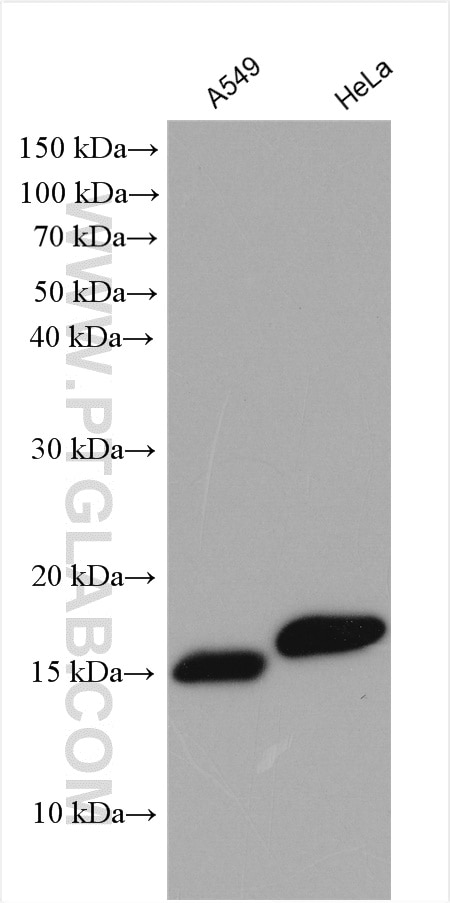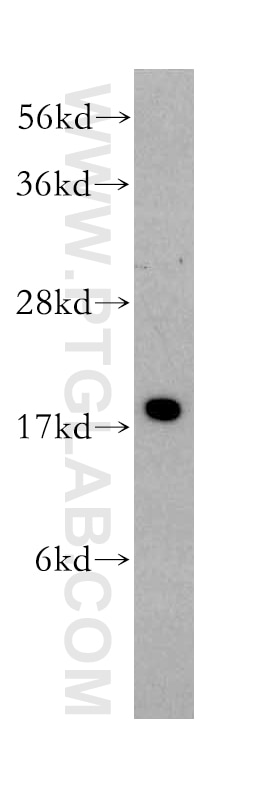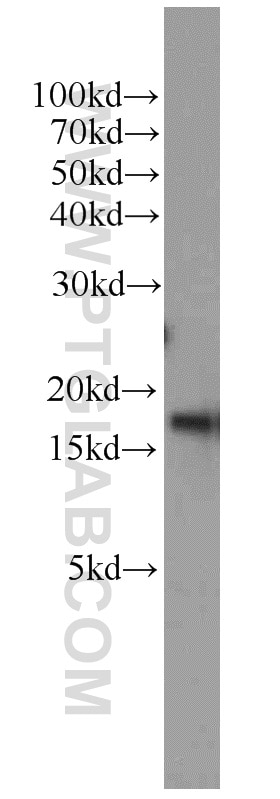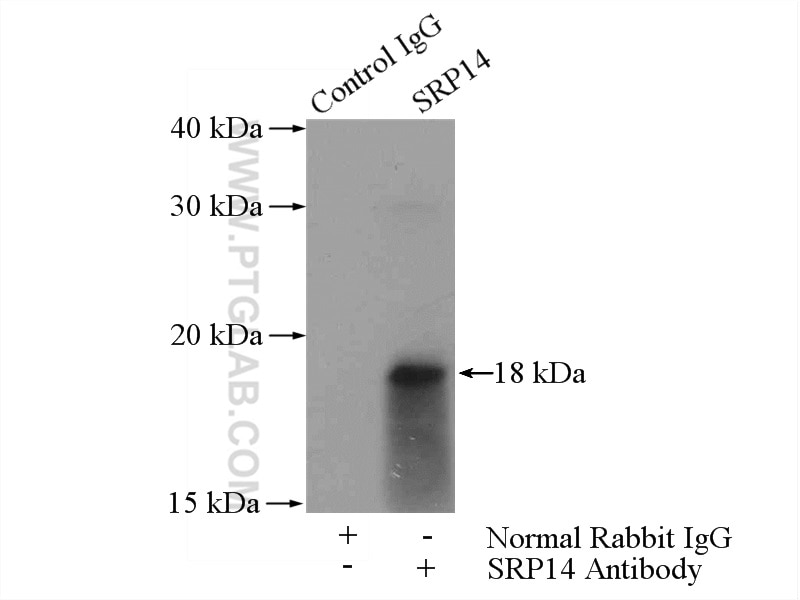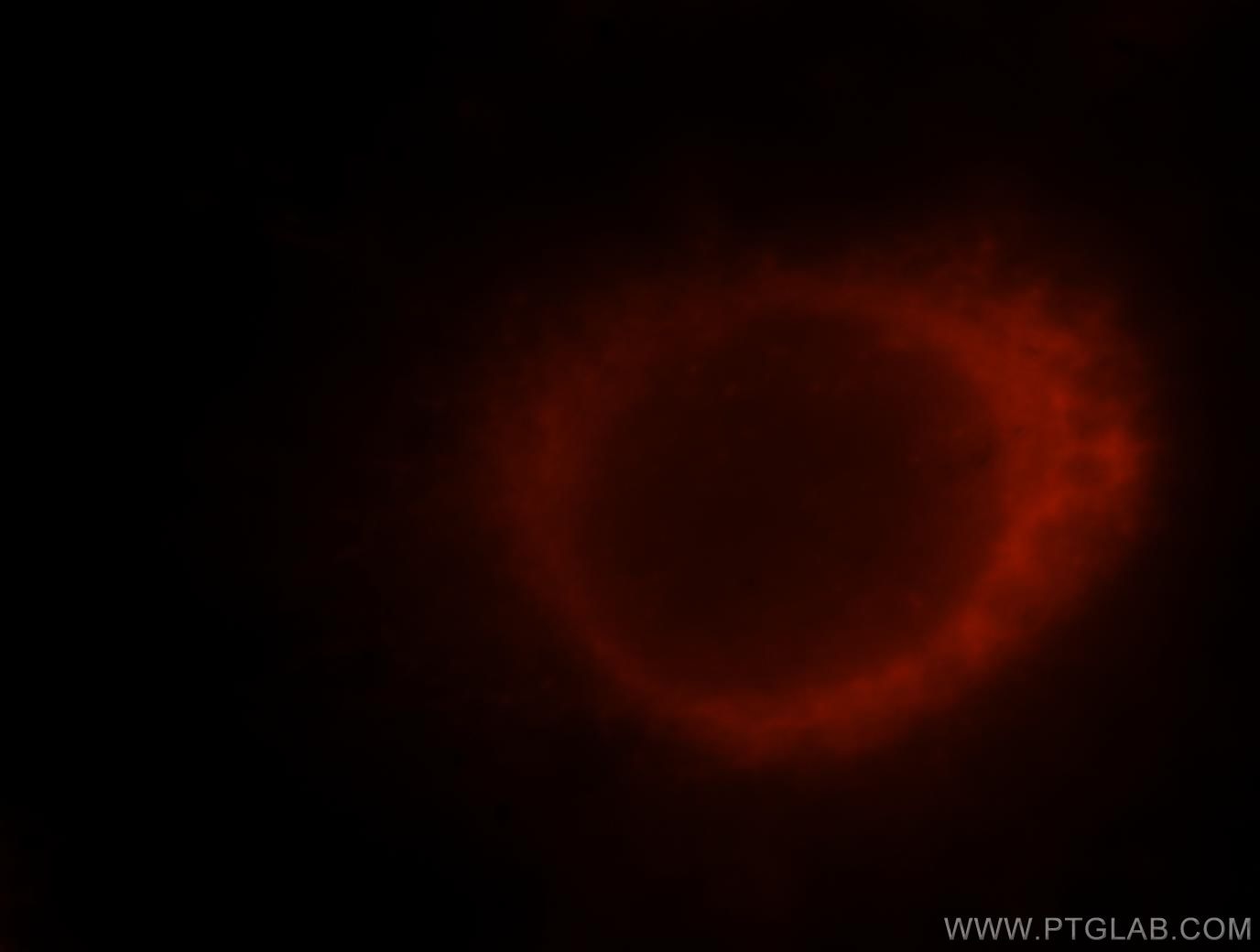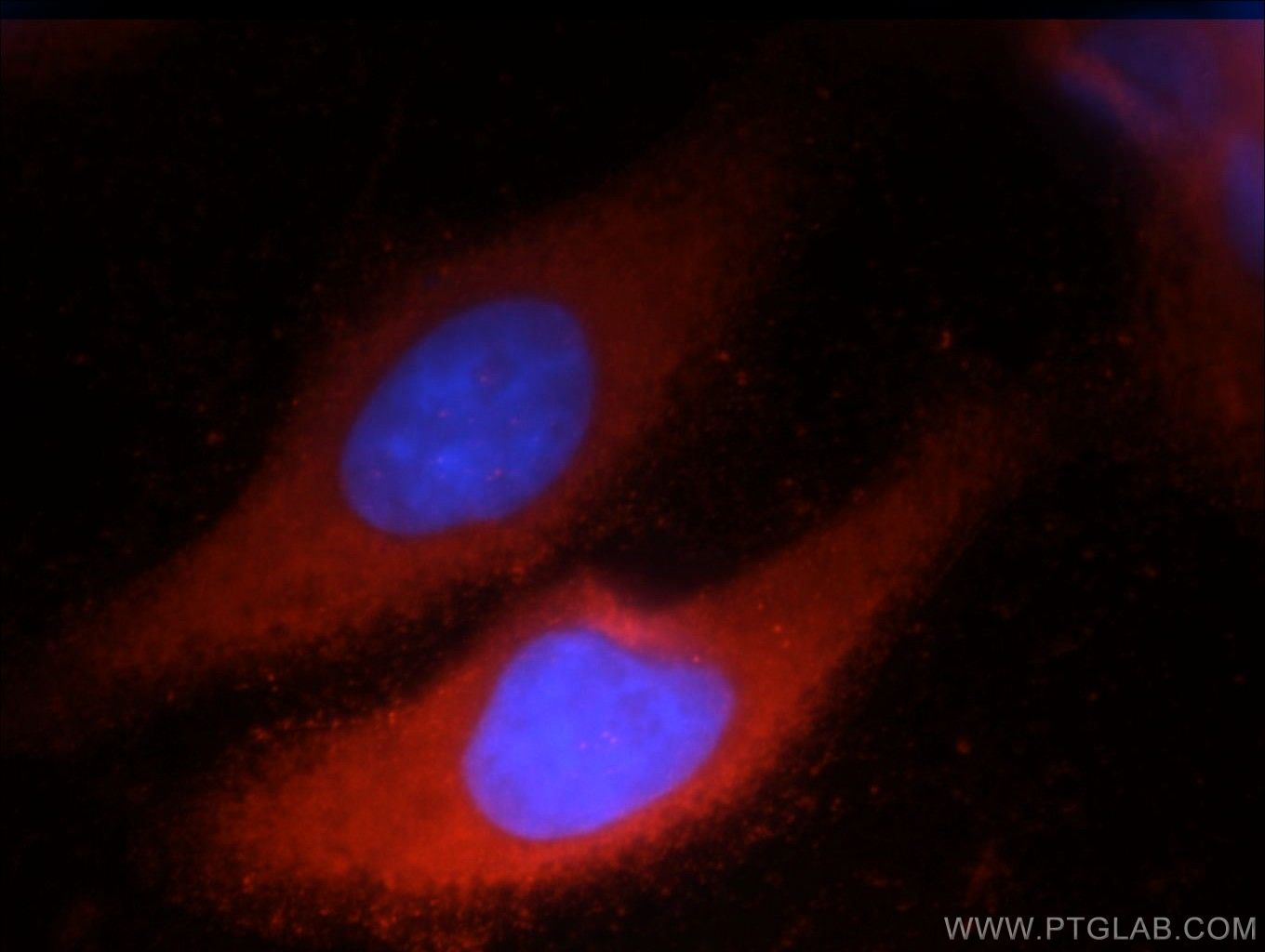- Featured Product
- KD/KO Validated
SRP14 Polyklonaler Antikörper
SRP14 Polyklonal Antikörper für WB, IF/ICC, IP, ELISA
Wirt / Isotyp
Kaninchen / IgG
Getestete Reaktivität
human, Ratte und mehr (1)
Anwendung
WB, IF/ICC, IP, ELISA
Konjugation
Unkonjugiert
Kat-Nr. : 11528-1-AP
Synonyme
Galerie der Validierungsdaten
Geprüfte Anwendungen
| Erfolgreiche Detektion in WB | A549-Zellen, HeLa-Zellen, humanes Herzgewebe |
| Erfolgreiche IP | A549-Zellen |
| Erfolgreiche Detektion in IF/ICC | MCF-7-Zellen, HepG2-Zellen |
Empfohlene Verdünnung
| Anwendung | Verdünnung |
|---|---|
| Western Blot (WB) | WB : 1:1000-1:4000 |
| Immunpräzipitation (IP) | IP : 0.5-4.0 ug for 1.0-3.0 mg of total protein lysate |
| Immunfluoreszenz (IF)/ICC | IF/ICC : 1:10-1:100 |
| It is recommended that this reagent should be titrated in each testing system to obtain optimal results. | |
| Sample-dependent, check data in validation data gallery | |
Veröffentlichte Anwendungen
| KD/KO | See 1 publications below |
| WB | See 11 publications below |
| IP | See 1 publications below |
Produktinformation
11528-1-AP bindet in WB, IF/ICC, IP, ELISA SRP14 und zeigt Reaktivität mit human, Ratten
| Getestete Reaktivität | human, Ratte |
| In Publikationen genannte Reaktivität | human, Maus |
| Wirt / Isotyp | Kaninchen / IgG |
| Klonalität | Polyklonal |
| Typ | Antikörper |
| Immunogen | SRP14 fusion protein Ag2099 |
| Vollständiger Name | signal recognition particle 14kDa (homologous Alu RNA binding protein) |
| Berechnetes Molekulargewicht | 136 aa, 15 kDa |
| Beobachtetes Molekulargewicht | 18 kDa |
| GenBank-Zugangsnummer | BC035495 |
| Gene symbol | SRP14 |
| Gene ID (NCBI) | 6727 |
| Konjugation | Unkonjugiert |
| Form | Liquid |
| Reinigungsmethode | Antigen-Affinitätsreinigung |
| Lagerungspuffer | PBS mit 0.02% Natriumazid und 50% Glycerin pH 7.3. |
| Lagerungsbedingungen | Bei -20°C lagern. Nach dem Versand ein Jahr lang stabil Aliquotieren ist bei -20oC Lagerung nicht notwendig. 20ul Größen enthalten 0,1% BSA. |
Hintergrundinformationen
Signal recognition particle(SRP) acts in three distinct ways: 1 it binds to the signal sequence of the nascent polypeptide to be translocated, which is exposed on the surface of the translating ribosome; 2 it temporarily retards the nascent polypeptide from further elongation; 3 it mediates docking of the SRP-ribosome-nascent polypeptide chain complex to the RER membrane via the heterodimeric SRP-receptor (SR). SRP14, also named as 18 kDa Alu RNA-binding protein, is a 136 amino acid protein. Signal recognition particle consists of a 7S RNA molecule of 300 nucleotides and six protein subunits: SRP72, SRP68, SRP54, SRP19, SRP14 and SRP9. SRP14 protein is a component of signal-recognition-particle that has a crucial role in targeting secretory proteins to the rough endoplasmic reticulum membrane. SRP9 together with SRP14 and the Alu portion of the SRP RNA, constitutes the elongation arrest domain of SRP. SRP14 form a heterodimer with SRP9, which recognizes Alu RNA and the related 7SL RNA.
Protokolle
| Produktspezifische Protokolle | |
|---|---|
| WB protocol for SRP14 antibody 11528-1-AP | Protokoll herunterladen |
| IF protocol for SRP14 antibody 11528-1-AP | Protokoll herunterladen |
| IP protocol for SRP14 antibody 11528-1-AP | Protokoll herunterladen |
| Standard-Protokolle | |
|---|---|
| Klicken Sie hier, um unsere Standardprotokolle anzuzeigen |
Publikationen
| Species | Application | Title |
|---|---|---|
Cell Exosome RNA Unshielding Couples Stromal Activation to Pattern Recognition Receptor Signaling in Cancer.
| ||
Mol Cell Estrogen-Related Hormones Induce Apoptosis by Stabilizing Schlafen-12 Protein Turnover. | ||
Genes Dev Human intron-encoded Alu RNAs are processed and packaged into Wdr79-associated nucleoplasmic box H/ACA RNPs. | ||
Nucleic Acids Res Comprehensive analysis of the BC200 ribonucleoprotein reveals a reciprocal regulatory function with CSDE1/UNR. | ||
Nucleic Acids Res Implication of the SMN complex in the biogenesis and steady state level of the signal recognition particle. | ||
J Biol Chem The noncoding RNA BC200 associates with polysomes to positively regulate mRNA translation in tumor cells. |
